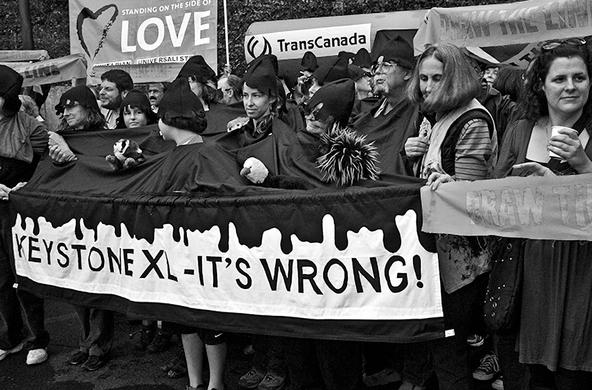Rapidly curtailing the CO2 and other greenhouse gas (GHG) emissions from fossil fuel use takes on greater urgency by the day. However, replacing fossil fuels with biomass for energy at large scales does not belong on the short list of actions for climate protection. Using bioenergy instead of fossil energy at significant scale is a cure worse than the disease.
A policy priority to promote biomass as a source of energy — whether liquid biofuels to replace oil or forest products to replace coal — is misplaced. This is the conclusion of a commentary by John DeCicco (University of Michigan) and myself in the Proceedings of the National Academy of Sciences. As bioenergy use has grown over the past decade, so too has the evidence that its net effect on GHG emissions is marginal at best and in many cases worse than fossil fuels.
The analytical models used to justify bioenergy were premised on the belief that bioenergy is inherently carbon neutral. This common assumption holds that the CO2 released by burning bioenergy instead of fossil fuels does not increase the net amount of CO2 in the atmosphere because it is fully offset by the CO2 absorbed when the biomass is grown. But this assumption turns out to be simplistic and misleading, because of the losses of carbon from soils and the long time-periods needed to restore the carbon content of mature forests that are harvested.
Bioenergy normally emits more CO2 than the fossil energy it replaces. The burden of proof then becomes whether diverting biomass for energy speeds up the rate of net carbon uptake by the biosphere. It is crucial to check the additionality of the carbon accumulation in biomass harvested to replace fossil carbon.
Once one realizes that CO2 mitigation requires increasing net carbon accumulation, it is clear that there are far better ways to do so than using bioenergy. First, it is crucial to redouble efforts to halt deforestation and the destruction of grasslands, peatlands and other carbon-rich ecosystems. Bioenergy exacerbates the pressure to convert natural lands, which are already under demand for food, feed and forest products. Extensive bioenergy also has adverse impacts on biodiversity, water availability, and other environmental concerns. There are many other opportunities for natural climate solutions to reduce greenhouse gas emissions, including reforestation, habitat restoration and improved agricultural methods.
The CO2 emissions from fossil fuel use should be reduced through higher energy efficiency and truly carbon-free energy sources such as photovoltaics, wind and tidal power. Replacing fossil fuels with bioenergy does not “decarbonize” the energy system; it is a flawed strategy now and for the reasonably foreseeable future. The programs and policies devoted to bioenergy should be redirected toward efforts to protect terrestrial carbon stocks and recarbonize the biosphere.
References
DeCicco, J.M., and W.H. Schlesinger (2018) Reconsidering bioenergy given the urgency of climate protection. Proceedings of the National Academy of Sciences https://doi.org/10.1073/pnas.1814120115
Doornbosch, R., and R. Steenblik. 2007. Biofuels: Is the Cure Worse Than the Disease? Roundtable on Sustainable Development. Paris: Organization for Economic Cooperation and Development (OECD), September. https://iet.jrc.ec.europa.eu/remea/biofuels-cure-worse-disease
Griscom, B.W., et al. (2017) Natural climate solutions. Proc Natl Acad Sci 114(44): 11645-50. https://doi.org/10.1073/pnas.1710465114
Haberl, H., et al. (2012) Correcting a fundamental error in greenhouse gas accounting related to bioenergy. Energy Policy 45: 18-23. http://doi.org/10.1016/j.enpol.2012.02.051
Lambin, E.F., and P. Meyfroidt (2011) Global land use change, economic globalization, and the looming land scarcity. Proc Natl Acad Sci 108(9): 3465-72. https://doi.org/10.1073/pnas.1100480108
Schlesinger, W.H. (2018) Are wood pellets a green fuel? Science 359: 1328-29. http://doi.org/10.1126/science.aat2305
Searchinger, T. (2010) Biofuels and the need for additional carbon. Environ Res Lett 5, http://doi.org/10.1088/1748-9326/5/2/024007






